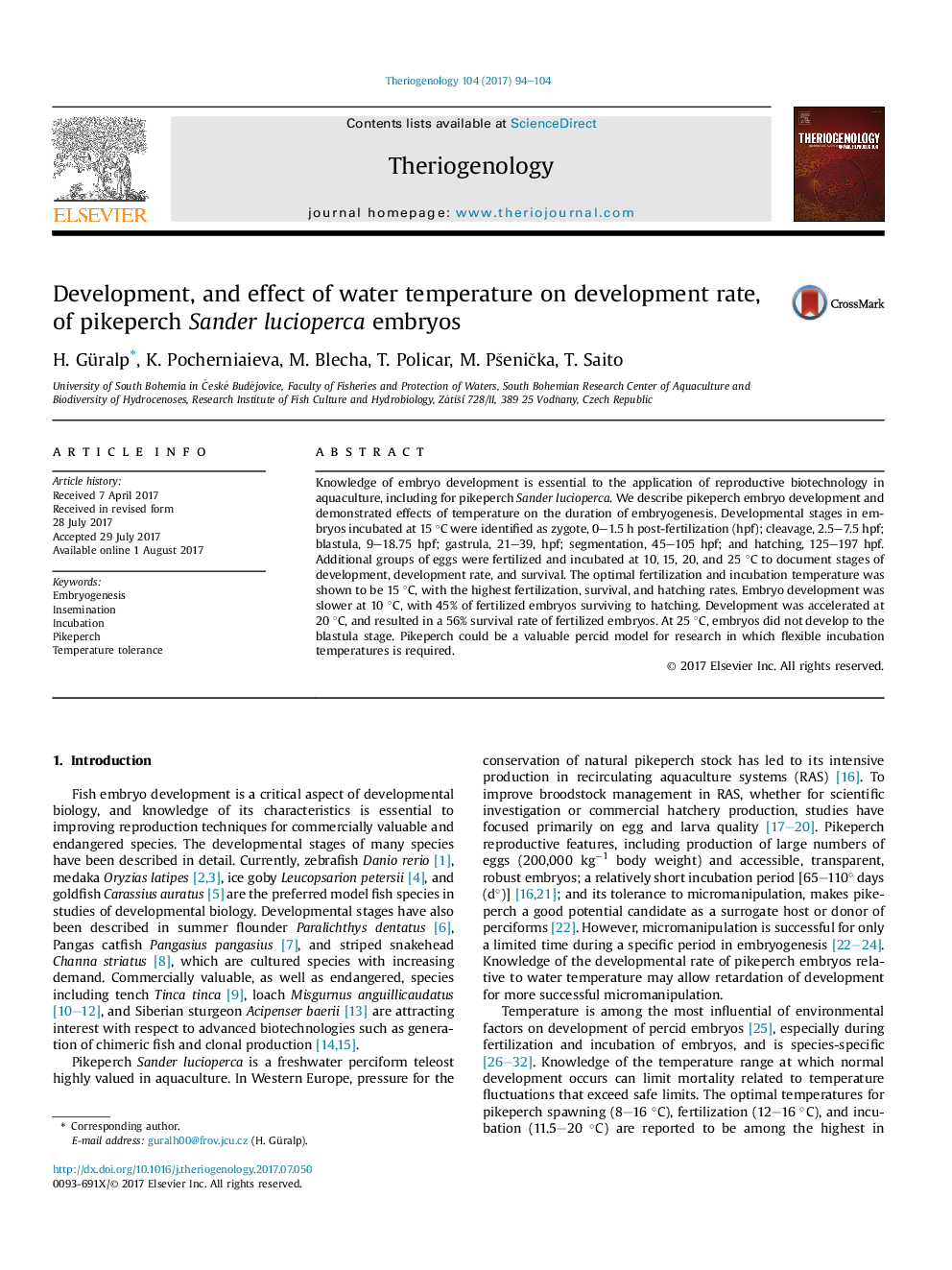| Article ID | Journal | Published Year | Pages | File Type |
|---|---|---|---|---|
| 5522992 | Theriogenology | 2017 | 11 Pages |
â¢The embryo development of pikeperch is characterized depended on other model fish in stages with a timetable.â¢The effect of temperature on development rate is shown from fertilization to hatching.â¢The best way for retardation of development were proposed for future manipulation on embryo.
Knowledge of embryo development is essential to the application of reproductive biotechnology in aquaculture, including for pikeperch Sander lucioperca. We describe pikeperch embryo development and demonstrated effects of temperature on the duration of embryogenesis. Developmental stages in embryos incubated at 15 °C were identified as zygote, 0-1.5 h post-fertilization (hpf); cleavage, 2.5-7.5 hpf; blastula, 9-18.75 hpf; gastrula, 21-39, hpf; segmentation, 45-105 hpf; and hatching, 125-197 hpf. Additional groups of eggs were fertilized and incubated at 10, 15, 20, and 25 °C to document stages of development, development rate, and survival. The optimal fertilization and incubation temperature was shown to be 15 °C, with the highest fertilization, survival, and hatching rates. Embryo development was slower at 10 °C, with 45% of fertilized embryos surviving to hatching. Development was accelerated at 20 °C, and resulted in a 56% survival rate of fertilized embryos. At 25 °C, embryos did not develop to the blastula stage. Pikeperch could be a valuable percid model for research in which flexible incubation temperatures is required.
